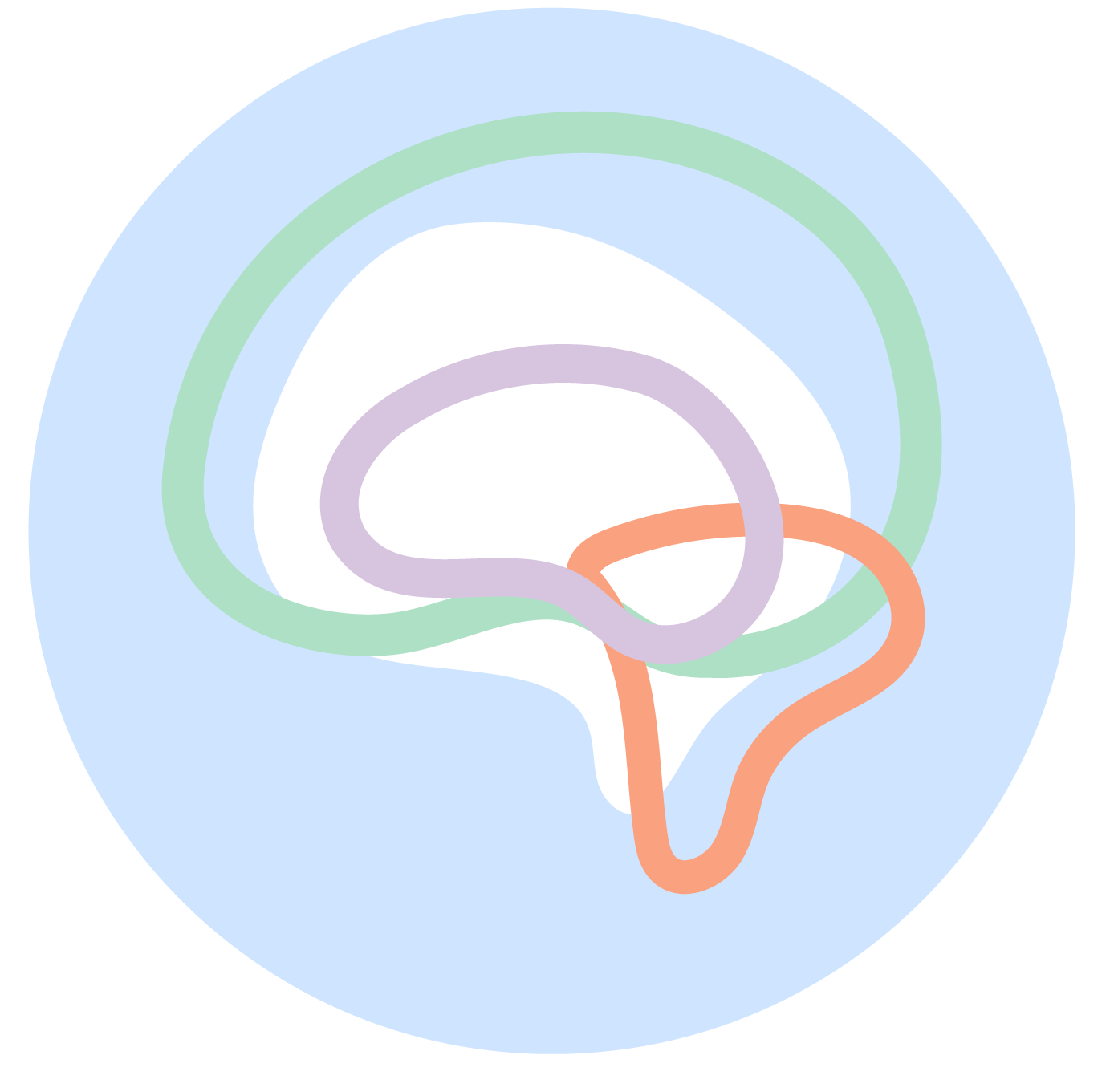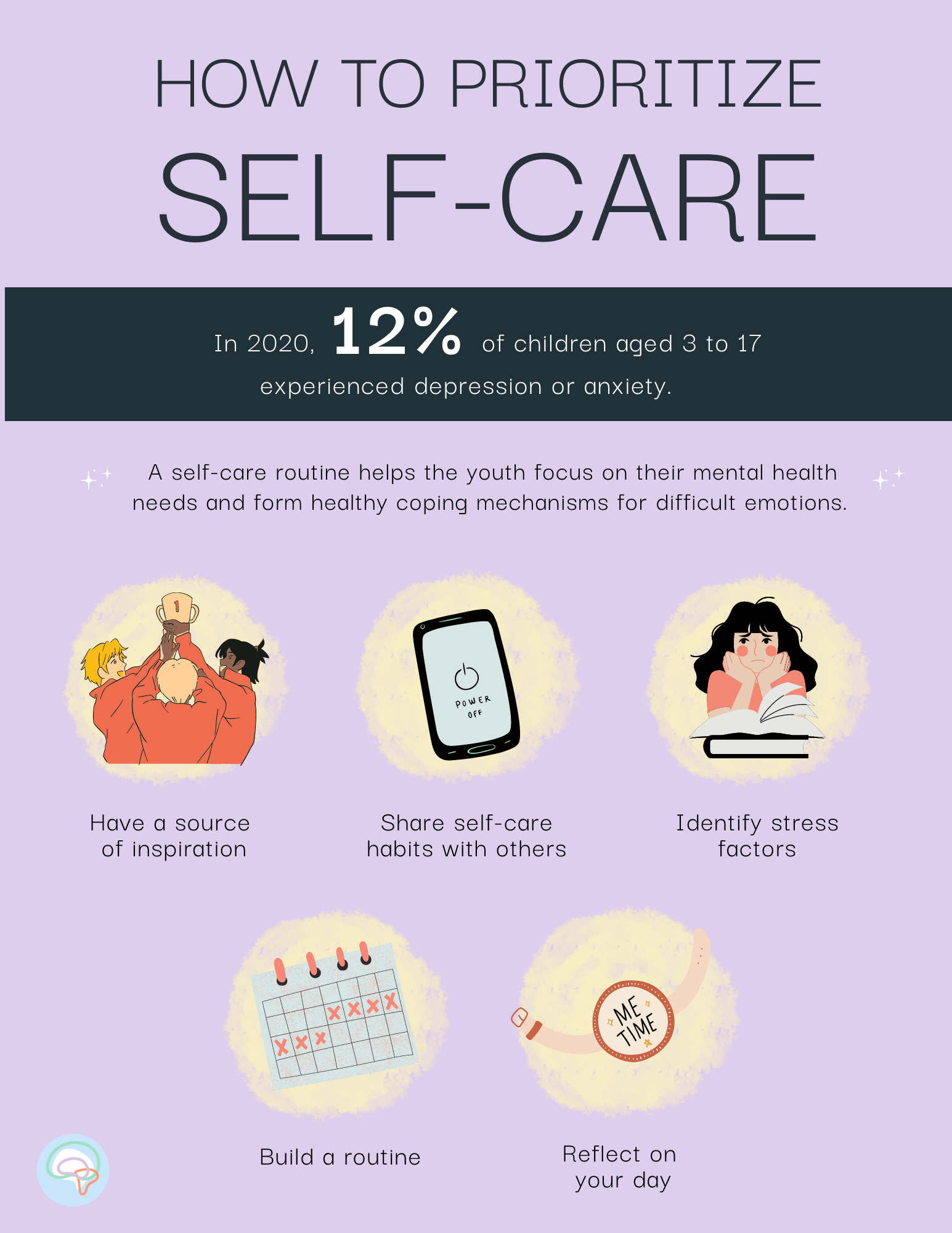5 tips to help children prioritize self-care
A 2020 study discovered that 12% of children aged 3 to 17 experienced depression or anxiety, an unprecedented level that signals the importance of mental health awareness and care for young children and teenagers.
Self-care is a common term we stumble across on the internet, especially during the new year.
But this term is a lot more than a set of activities means to make you look better or temporarily feel relaxed. Self-care in youth plays an important role in helping them understand their mental health needs and form healthy coping mechanisms for stress and difficult emotions.
Here are five ways parents and caretakers can help their children look at self-care as more than just a new years resolution, but a way to improve their mental and physical health all year round.
Provide a source of inspiration
The older we get, the more we realize how important it is to prioritize our health and well-being. We become aware of how self-care helps us keep a level head and a focused mind as we navigate school, work, and relationships with other people.
But as a growing child or teenager, the idea of slowing down and methodically approaching rest time can sound confusing and maybe even unnecessary. Self-care as a form of rest isn’t the same as scrolling through social media or playing computer games all day. The best way to illustrate this is by showing children an example of self-care habits from a person they admire
This person could be you, a family member, a friend, a role model, or even a celebrity or athlete they look up to. Pick a person who can inspire them because of their ability to meet and exceed their goals through conscious efforts to take care of themselves.
Here’s an example: Julie Ertz, an Olympic athlete who plays on the United States Women’s National Soccer Team.
Julie’s self-care habits include training with different workout routines, meal planning, taking time to reflect on her goals, and prioritizing her spiritual life. She’s a big source of inspiration for young girls who enjoy playing sports, doing physical or outdoor activities, and are just competitive.
Share your self-care habits
One way to build consistency with self-care is by making it an activity that can be done as a family or group. Small habits can be seen by children as more fun and relatable if their family or friends are doing it with them.
As a parent or a caretaker, you can encourage self-care by sharing your habits. You can focus your conversation on these questions:
What are the activities or habits I define as self-care?
When do I carry out my self-care routine?
Why do I spend time on self-care?
How do I feel after I go through my self-care routine?
To engage children even further, show them some of the materials that you use in your self-care routine, like books, music, food, sports, and more. The point here is to lead by example. You want to show children that self-care is worth prioritizing, and there’s no way better way to do that than by showing them how you prioritize it in your day-to-day life.
Identify stress factors
Self-care shouldn’t be rooted in social media trends. Instead, a routine should be built to alleviate the stress of the activities and environments unique to a child’s day-to-day life.
Sit down with your children and discuss the things in their life that make them worry and what makes them feel the most at peace. List these down in the prompt below and from there, brainstorm some self-care habits that can be easily included in their day and are made up of activities that they truly enjoy.
Every individual defines stress in different ways. For some young people, too much social activity can cause anxiety and discomfort. To combat these emotions, their self-care routine might include more activities centered around being at home (or in any safe and comfortable space) and spending time doing activities that are more quiet and introspective — like journaling, reading, listening to music, and watching a favorite movie.
On the other hand, some children need to see and experience social interaction to calm their minds and express their emotions. Their self-care routine should incorporate more outdoor or interactive activities, like going on walks, heading to the beach with friends, cooking with family, or playing sports.
If your children’s self-care serves a purpose that’s directly tied to their schedules, likes, and dislikes, keeping it a constant priority becomes second nature.
Build a routine
A routine helps you effectively fit self-care habits into the structure of your children’s day.
One great way to incorporate consistency in self-care is by including these habits as part of a morning or evening routine on certain days.
For example, if Thursdays are your child’s most draining day of the week, you can include their self-care habits as part of their evening wind-down. You can fit in an hour of art, reading, or sports before they eat their dinner or turn shower time into a longer bath.
It becomes even more meaningful if parents and caretakers can join in on some of these self-care routines and make it a group activity. You can dedicate 30 minutes of your time to do a calming activity with your child before they go to sleep, like reading a story, playing with toys or a board game, or even just talking about your day together.
Encourage self-reflection
Self-reflection can be a great way to keep track of your children’s moods and identify stress factors that can be addressed through self-care. The more aligned you are with these daily patterns, the easier it is to build healthy self-care routines that are consistently practiced. Finding time to reflect is also a form of self-care in and of itself because it encourages individuals both young and old to contemplate, express, and validate their emotions.
Whether it’s keeping a journal or spending five to ten minutes each day, week, or month to write and talk about how they’re doing, motivate the young people around you to use self-reflection as a time to be transparent and vulnerable with themselves. As they reflect on the things that bother them, they may discover on their own just how important is to take care of their mental and physical health to overcome those challenges.
For younger children, parents and caretakers can be more involved in the reflection process by prompting them with these questions:
What is one thing that happened today/this week/this month that you are grateful for?
How did today’s school and after-school schedule make you feel?
Are you happy with how you spent your time today?
What is the biggest lesson you learned today/this week/this month?
What do you want for yourself in the next week/month?
More from My Good Brain
Check out our resources page for tips on using art and sports to boost mental wellness. You may find some of these activities a great addition to a self-care routine!


